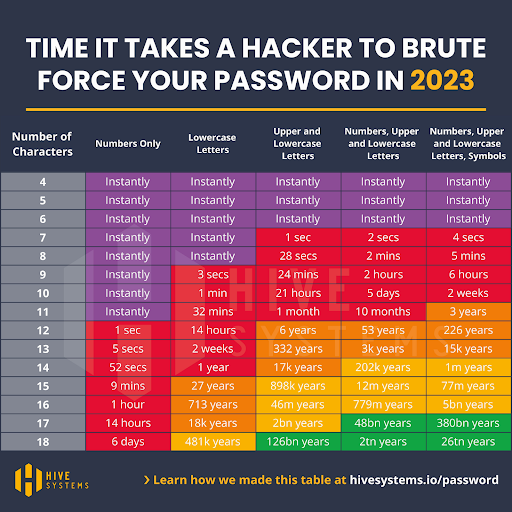
With more and more interactions and transactions occurring online rather than face-to-face, it’s more important than ever to know how to avoid being scammed online. The digital world, in particular, is experiencing a surge in online fraud. In fact, the FBI reported a 10% increase in fraud complaints from 2022 to 2023 and a 22% increase in financial losses during the same period. As noted by the Federal Trade Commission (FTC), Americans lost over $10 billion nationwide to online fraud in 2023, with investment scams being the most costly, accounting for $4.6 billion.
While devastating, these attacks are not just about financial loss. They can compromise personal data and lead to identity theft, corrupt devices, and long-lasting distress caused by the manipulation of victims’ emotions, undercutting their sense of security. At StreamSafely, we’re dedicated to helping you stay secure online. That’s why we’ve compiled these 11 essential tips and strategies to protect you from scammers and safeguard your digital activities.
Common Types of Online Scams
Online scammers have an arsenal of deceptive techniques designed to trick even the most cautious internet users. Knowing what these scams are and how they work is the first step in protecting yourself from potential threats. Common scams include:
- Phishing Attacks: As the name implies, phishing attacks are when the scammer fishes for personal information, typically through urgent-sounding emails, phone calls, or text messages. Cybercriminals will often pose as legitimate organizations, tricking users into revealing sensitive details like passwords, bank account numbers, credit card information, and social security numbers.
- Fake Websites (Spoofing): Fake or unauthorized websites, including piracy sites, often take the form of carefully constructed replica websites that look almost identical to legitimate platforms. These sites are created to capture login credentials, payment information, and other personal data by convincing users they are on a genuine website.
- Online Shopping Scams: E-commerce scams often offer incredible deals to lure unsuspecting shoppers. These fraudulent ads and websites may take payment without delivering products, sell counterfeit goods, or use the transaction to steal financial information.
- Romance Scams (Catfishing): With the anonymity the internet provides, fraudsters can create fake online personas to establish romantic relationships. These dating scams are a type of emotional manipulation where the ultimate goal is to exploit victims’ trust and eventually request money, gift cards, or personal information. In especially dark cases, the victim may even be blackmailed.
- Investment Scams: Investment scams are deceptive financial schemes promising unrealistic returns on investments. These scams often use complex narratives and seemingly professional presentations to convince victims to transfer large sums of money. Often portrayed as a way to buoy retirement savings, these scams are commonly directed at senior citizens.
Fraud Prevention Strategies: Practical Tips to Stay Safe Online
Protecting yourself online requires you to stay on your toes and insulate yourself with a multifaceted security strategy. If you stay vigilant, the following strategies will help you build a strong defense against potential scammers:
1. Use Strong, Unique Passwords
Creating strong passwords is your first line of defense against unauthorized access to your online accounts, financial or otherwise. Develop passwords that include a mix of uppercase and lowercase letters, numbers, and special characters. As CalTech illustrates, the more complex your password, the harder it is to crack. Never reuse passwords across multiple platforms. Each account should have a distinct password to minimize potential damage if one account is compromised.

2. Enable Two-Factor Authentication (2FA)
Two-factor authentication, also known as multi-factor authentication (MFA), is the process of verifying credentials through something you know (like a password) with something you possess (such as a mobile device) or by who you are (like facial recognition). This provides an extra fail-safe and makes your accounts much harder for criminals to access, eliminating as much as 99.9% of the risk.
Utilize authenticator apps, SMS codes, or biometric verification whenever possible. Apply 2FA across all critical accounts, including email, banking, social media, and cloud storage platforms.
3. Verify Links Before Clicking
Malicious links are a primary method for spreading malware and stealing information. Always hover over links to preview the destination before clicking. Check for misspellings, unusual domain extensions, or suspicious website addresses. When in doubt, use Google’s URL checker to see whether or not a link is safe.
4. Look for HTTPS and Secure Sites
Identifying whether or not a website is secure is an important part of how you browse online. In the address bar, look for “https://” (with an S) at the beginning of website URLs, which indicates that your connection is encrypted and information sent or received cannot be seen by third parties. Note that the padlock icon, previously used to indicate secure connections, has been replaced by the tune icon in some browsers because even phishing sites can use the padlock symbol. Stay away from poorly designed sites, as these are more likely to be fraudulent. Again, you can always use Google’s URL checker to double-check a site’s authenticity.
New Tune Icon can be seen on the left of a URL.

5. Avoid Sharing Personal Information Over Unsecured Networks
Public Wi-Fi networks can be breeding grounds for digital threats. Avoid conducting sensitive transactions on public or unsecured wireless networks, especially online banking or anything that uses your personal details. Wait until you have access to a private, password-protected connection. Always assume that all public networks could potentially be monitored by malicious actors.
6. Recognize Phishing Emails and Messages
Learn to identify phishing scams and suspicious digital communications. Check email addresses carefully for slight misspellings or unusual domains that might indicate a fraudulent source. Be wary of messages that create a sense of urgency, use threatening language, or warn of dire consequences if you don’t act immediately.
7. Monitor Financial Accounts Regularly
Monitoring your accounts regularly helps detect potential fraudulent activities early. Check your bank and credit card statements weekly for any unauthorized transactions or suspicious activities. If not already in place, set up transaction notifications to receive immediate updates about account activities.
8. Be Wary of Too-Good-To-Be-True Offers
Unrealistic promises often signal potential scams. Despite how exciting an opportunity may seem, strive to remove emotion from the equation and maintain a critical perspective. Remember that if an offer seems too good to be true, it likely is, so be sure to research the source thoroughly before clicking any link or engaging with the platform, ad, or original sender. Lastly, never take financial or investment advice from someone you have not met.
9. Use Secure Payment Methods
Choose payment methods that offer additional layers of security and potential recovery options. Credit cards often provide better fraud protection compared to wire transfers, debit cards, or payment apps like Zelle because the charge can be reported and disputed after the fact. Consider using reputable digital payment platforms with built-in security features, and never send money to someone you do not know or trust. Even if you’re dealing with a family member, confirm their identity through another means of contact or information that only they would know to help make sure you’re not communicating with an impostor.
10. Regularly Update Software & Devices
Keeping your devices and their software updated helps make sure that they’re operating at their fullest potential with the latest security features. Enable automatic software updates for operating systems, browsers, and applications. Install security patches promptly when they become available.
11. Leverage Tools & Resources
Utilize available technological solutions to enhance your online protection. Install comprehensive security software from reputable providers like Seraph Secure. Use encrypted password management tools like LastPass to generate and store complex passwords securely.
As always, StreamSafely is here to help keep you current on the latest security trends so you can learn what bad actors are up to and how to stop them in their tracks.
What To Do if You’ve Encountered a Scam
If you suspect you’ve fallen victim to an online scam, we at Stramsafely have created a detailed, step-by-step recovery guide to help minimize the damage. Here’s a basic breakdown:
- Stop communication with the scammer immediately
- Secure your accounts by changing your passwords
- Report the fraud to the authorities
- Contact your financial institutions to freeze or reverse transactions
- Contact credit bureaus to set up a fraud alert
- Check for identity theft and unfamiliar transactions across your accounts
- Document all evidence of the fraudulent interaction as well as your conversations with your financial institutions and the authorities
To report the scam, these are the five institutions you should turn to:
- Federal Trade Commission (FTC): Report identity theft or scams and fraud
- Internet Crime Complaint Center (IC3): Submit a complaint
- Better Business Bureau (BBB): Report a scam
- State Consumer Protection Office: Find your local office and register a complaint
- Local Law Enforcement: Report the incident to your local police department, especially if you believe the fraudster is operating in your region.
Find More Resources To Protect Yourself With StreamSafely
StreamSafely is proud to provide extensive resources to help users like you navigate online spaces safely. Our Scam Warning library provides guides about online threats such as phishing, digital piracy, and the tactics used by bad actors to lure victims. We empower users to make informed decisions and protect themselves in every way they can. Our mission is to keep you informed, prepared, and safe in an increasingly complex digital world, and we’ll be here with more answers and advice whenever you need us.





